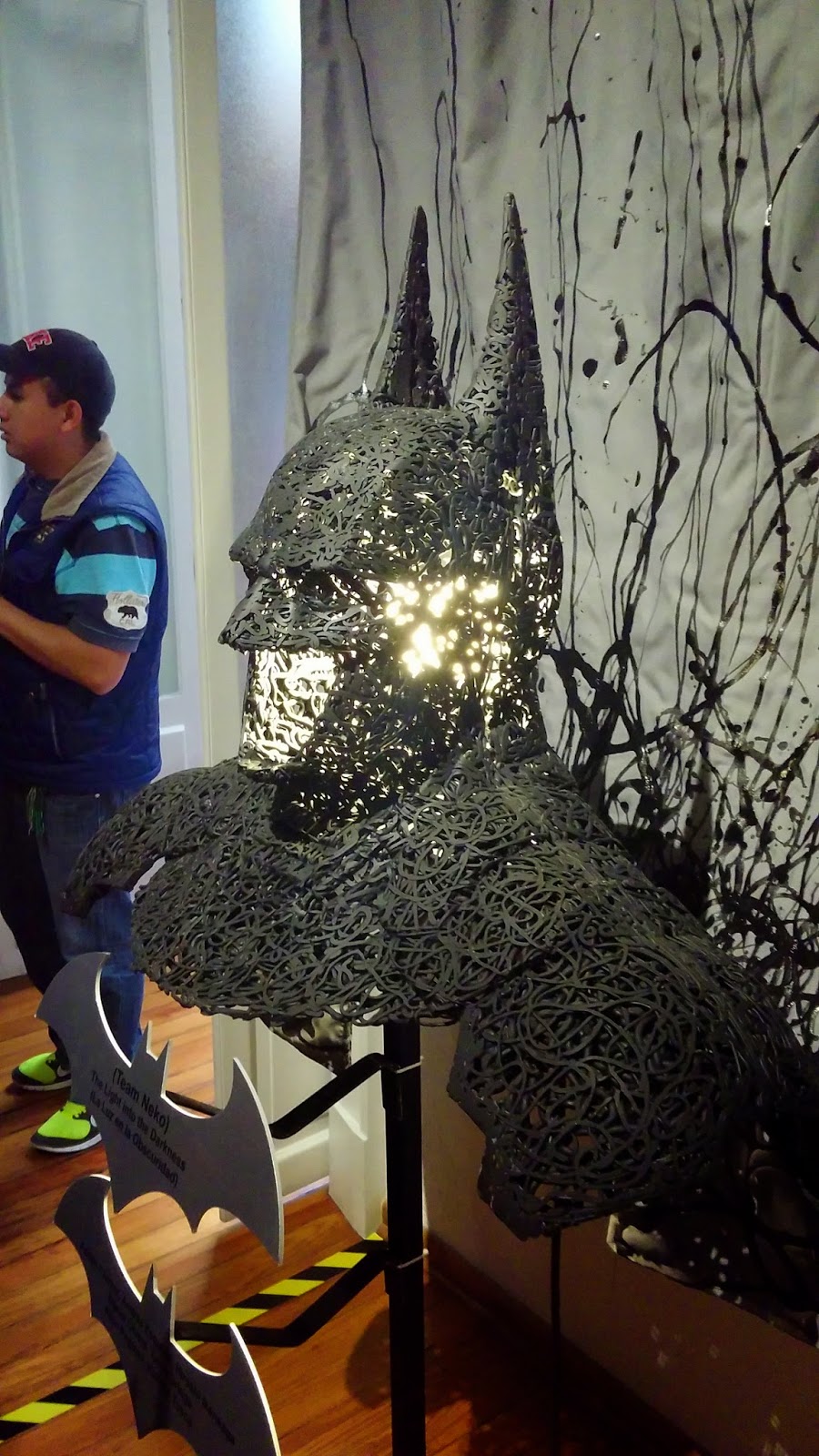Quizá no lo sabían - por lo regular ninguna persona normal lo sabría - pero en 1939, una revista de historietas llamada "Detective Comics" dio a conocer a un personaje que en su época simplemente fue un justiciero más, pero que millones de historias y cientos (si no es que miles) de escritores después, se convertiría en el único personaje humano capaz de vencer a un panteón de dioses que en la página pueden partir el planeta en dos con un solo golpe: el caballero de la noche, un símbolo de lo que se supone que la obsesión y la voluntad humana pueden lograr, nuestro señor, Batman ("Bats" para los cuates).
Ok, si, soy un fan del personaje. Creo que me ha fascinado en todas sus encarnaciones y personificaciones y es que hay algo maravilloso en pensar que cualquiera de nosotros sería capaz de controlarse al grado de lograr condiciones físicas superiores a un atleta olímpico y procesos mentales más allá de IQs de premios Nobel. Aunque parezca de plano cosa de deficiencia mental, Batman de alguna forma me parece una figura inspiradora (si él es capaz de pelear toda la noche y al día siguiente irse a la oficina, ¿acaso no voy a poder correr míseros 42 kilómetros o arriesgarme para lanzar mi proyecto soñado?).
Dicho lo anterior, realmente me emocioné al saber que México se uniría a las celebraciones del 75 aniversario del personaje y haría la exposición que se ha hecho con la fundación "Make a Wish" en otros países del mundo, dando a artistas locales la oportunidad de dar su versión de la máscara más fantástica en el mundo de los comics (repito, soy fan y para mí la máscara de Batman es la más fantástica).
Aprovechando la ocasión, llené una bolsa de ejemplares de nuestra novela y me lancé a la exposición para ver qué tan bien nos recibían en una fila de más de 2 horas y media. Afortunadamente en ese tiempo pude repartir algo así como 40 ejemplares de nuestra novela y bueno, no sé si sería porque cualquier cosa es buena para distraer la mente cuando se esta en una fila de apariencia interminable, pero los que recibieron nuestra novela perecieron apreciar algo que leer.
A continuación una pequeña semblanza de las maravillosas creaciones que vimos y que serán subastadas, así que mejor verlas aquí porque quién sabe dónde queden después de que las vendan.
Esta es por Bernardo Fernández (Bef) famoso escritor e historietista, ganador de muchísimos premios, colaborador de Editorial Resistencia y para acabarla, compañero de la preparatoria. La verdad no fue de mis favoritas, pero bueno, se es solidario.
Esta por Rafael Gómez y Belén Moy me pareció muy linda. No la más imponente, pero la Poison Ivy al flanco me mató (lo siento, de ellos tampoco pude encontrar mucho en línea).
Esta es por Mr. Mitote (Heriberto Rodela) un genio de las figuras de vinyl. Me gusto sobre todo por el baty-gato que tiene arriba. Si pudiera yo creo que esta sería la que compraría (claro que si tuviera dinero para tales menesteres ya me habría comprado de menos uno de sus muñecos más sencillos. Vean su página, tiene hasta chanclas que están muy, muy adecuadas).
Esta de Estudio Zoveck me pareció especial porque captura, según yo, la esencia de la calavera de día de muertos, una de nuestras fiestas más entrañables en México.
Esta es de Ulises Daniel Hernández Bocanegra, quién como pueden ver, se fue por el motivo prehispánico de la variedad que parece recién sacado de la excavación. El detalle de las lágrimas rojas me pareció que remite a una nostalgia por un pasado ya extinto (lo lamento, tampoco pude encontrar mucho de Ulises en la red).
Esta, es por David Kimura, genial artista de grupo Horma. Si se fijan el patrón de la capa está constituído por figuras de los enemigos del encapotado. Un detalle sutil que sin embargo se me hizo perfecto.
Esta maravilla es por Estudio Neko, una firma de diseñadores industriales involucrados más bien en la creación de obras que inter-actuen de alguna forma con el entorno. En este caso, la obra se asume elaborada en función del filtrado de luz sobre el negro (oscuridad). Uno de los diseños más sorprendentes.
Otra obra con motivos prehispánicos, en este caso, Camaztoz, un demonio "vampírico" de la mitología mesoamericana. El autor, Christian Pacheco Kimbal es un artista multidiciplinario que pisa por el grafiti, la escultura y... Bueno, también los cascos del caballero de la noche.
Como soy fanático del arte en blanco y negro, esta, de Cecilia Beaven, me fascinó. El motivo es el murciélago como tal y así nos lo indica la capa con nombres de quirópteros como si fueran consignas de protesta. Viendo quién era Cecilia, me topé con su página y me fascinó su trabajo de animación, les recomiendo le echen un ojo.
Esta es definitivamente la más elegante. El Batman Oaxaqueño en aparente barro negro y con una capa tejida como tapiz de noche, una maravilla artesanal que también me fascinaría tener en casa. Los artistas son del equipo del Despacho creativo llamado Bamf con Antonio Serrano.
Por último, les persento la obra de Bern Baños, de Toloache Toys (con diseños muy buenos, también los recomiendo), también basado en las deidades vampíricas de mesoamérica con una capa verdaderamente impresionante.
Y bueno, no lo pude resistir
 |
Espero que les haya gustado este viaje por las maravillosas obras de los artistas mexicanos que participaron en la exposición. Recuerden que seguiremos repartiendo gratuitamente nuestra novela en diferentes eventos durante el resto del año y si, no podría despedirme de ustedes sin decir "¡Felicidades Bats!"
Arturo B. Loranca

























